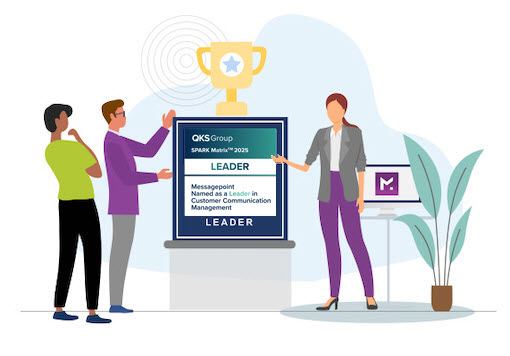
To suggest that this pandemic has imposed a number of changes upon us over the last year would be an understatement, often making the simple things we do every day so much more complex.
As an example, an activity as routine as shopping became difficult: Suddenly we weren’t able to pop into a store to pick something up or try something on; we had to order it online and wait for it to be delivered to our home or for someone to deliver it to our car as we idled curbside with our trunks open. For businesses, there was the scramble to figure out a way to make it possible for employees to work remotely in an unusually short timeframe. If nothing else, this pandemic has taught us to rethink how we accomplish basic and fundamental activities, like dining, socializing, shopping, learning, and yes, even working.
In so many ways, the pandemic brought to the forefront the desire for ease and simplicity in our day-to-day lives. As my friend Jay Baer says, “No organization is getting a pandemic pass anymore.” As consumers, as customers, there is a very real fatigue stemming from the extra procedures, slower responses, unsuccessful outcomes, and, overall, the hoops we have had to go through over the last year. The fact is that now more than ever, we can win over customers by making it easier to do business. The pandemic has also impressed upon us that the pressure to perform is constant. Several studies have revealed increased switching behavior and reduction in customer loyalty since the pandemic began. Customers are quickly shutting down poor experiences and pivoting to better alternatives.
This also holds true in our work lives and, for many of us, that manifests itself in how we manage our customer communications. It’s essential to simplify how they get produced, what you send to customers and how you send it. Customers demand faster responses. How can you possibly meet that expectation when you have convoluted processes that slow your responses down? Customers are also looking for relevancy, personalization, and a frictionless experience via the channel of their choosing. Without systems in place that make content authoring and targeting across all channels easy, you can’t possibly keep up with this requirement. Today, we need to transform our communication processes to meet changing customer expectations.
There’s a famous, thought-provoking Steve Jobs quote about the concept of simple that I keep by my desk: “Simple can be harder than complex: You have to work hard to get your thinking clean to make it simple. But it is worth it in the end because once you get there, you can move mountains.” I suggest simplification starts with what Jobs called thinking clean, which means avoiding overcomplicating customer communications—i.e., finding ways to streamline the process of creating personalized, regulated communications, then carefully considering how you manage and deliver them.
One way to do this is to remove IT from as much of the content curation process as possible. This can happen by making it easy for business users to be more self-sufficient, to manipulate and author content and associated templates across all channels. Doing so will open up the opportunity for delivering consistent personalization across channels, as well as better performance in meeting your SLAs and eliminating the worry of slowing down those who support your customer communications and your customers. For speed, accuracy, consistency, and ease of authoring, it helps to manage your content in one centralized place, so that content authors can easily find, share and reuse content across touchpoints and channels. Additionally, if you haven’t already done so, now is the time to move to a modern platform that is hosted in the cloud to seamlessly scale, support all channels (print, email, SMS, web, IVR) and put less management burden on your team.
To deliver effective customer communications and the experiences that result from them, it’s essential to make crucial choices about the right content to put into your unique communications recipe. To do this successfully, seek out and leverage new approaches, such as artificial intelligence (AI) powered content optimization that makes it easier to push customer experiences beyond their current limitations. These technologies enable business users to do things that used to be complex and required IT to intervene in the old conventional systems; for instance, centrally managing content and content reuse. This will also help drive consistency across channels, so your customers have the same brand experience regardless of the channel they use.
Tackling the challenges of content migration, optimization, management and delivery of customer communications may seem a bit overwhelming at first, but it is integral in delivering the seamless, delightful experiences that your customers expect and demand, especially based on some of the fallout from the current pandemic. Ultimately, it takes adopting the concept of clean thinking—powered by AI technologies—to truly streamline processes. Now more than ever, we need to innovate with this notion in mind and think our way through how to create simpler user experiences that deliver transformational results for both you and your customers.

TORONTO, April 24, 2025 –Messagepoint has been named a 2025 SPARK Matrix™ Technology Leader in Customer Communication Management…
Read the Article
Check out the 2025 Spark Matrix for Customer Communication Management, and see why Messagepoint is a leader in…
Read the Article